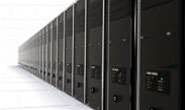
The firm reckons it can save itself some US$700 million to US$800 million a year by causing long queues in Santa Clara unemployment offices, but the move will also likely cost $600 million in charges over the next 12 months.
Spouting off about a “new economic reality”, Sun’s Chief exec, Jonathan Schwartz coldly declared the move would “eliminate some of the inefficiencies that have made it hard to do business with Sun”.
Things have been looking decidedly cloudy for Sun lately, after recently announcing a US$1.67 billion loss in the last quarter and a 7 per cent year-over-year drop in revenue to a paltry US$2.99 billion. Product sales also took a hit, dropping 10.9 per cent to US$1.76 billion, and services sales lost one per cent, reaching US$1.23 billion. Sun’s shares have plummeted 80 per cent in the past year, shrinking the firm’s market value to $3 billion.
Much of this has been blamed on the rapidly-becoming-boring credit crunch and Sun’s big Wall Street buyers in the financial service industry having to tighten their oversized belts, meaning they aren’t buying quite as many high-end server and storage systems as Sun would like.
Southeastern Asset Management, the Tennessee investment firm which recently bought 21 per cent of Sun, had said after seeing the financial results it still had faith in the firm but also noted it would be having talks with the firm " and/or third parties" about improving the stock value.
Sun has already made a few changes aimed at getting itself back on track, with Rich Green, formerly executive vice president in charge of Sun’s software business tending his resignation, and with the firm building up its product portfolio.
After it’s announcement about the upcoming mass layoffs, Sun shares rose 12.7 per cent to US$4.07.



.png&h=140&w=231&c=1&s=0)





 iTnews Executive Retreat - Security Leaders Edition
iTnews Executive Retreat - Security Leaders Edition












_(1).jpg&h=140&w=231&c=1&s=0)



